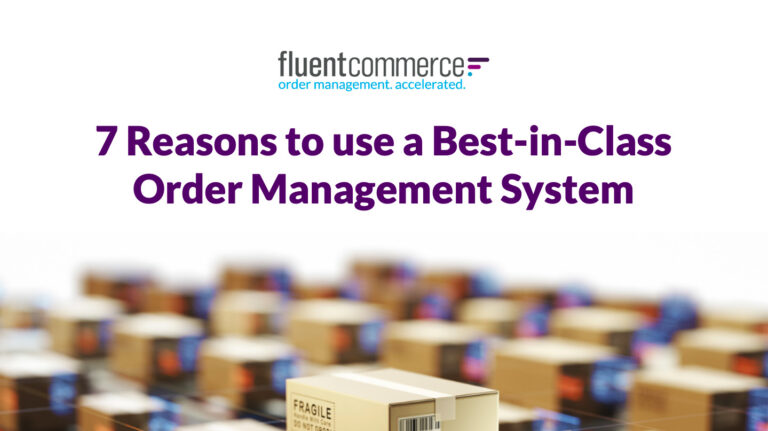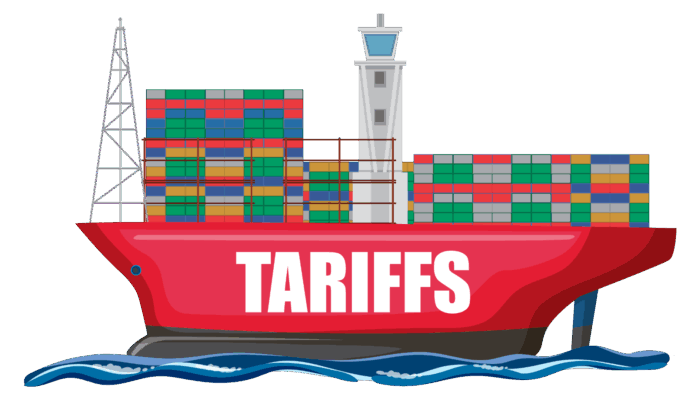Anyone in retail who manages an ERP system or an Order Management System (OMS), is aware of the industry shift toward cloud computing. Cloud-native applications have many benefits over traditional, hosted solutions. But did you know that all clouds are not created alike? With so many software companies adopting the language of the cloud–without investing in the actual building blocks needed to power a cloud-native experience–retailers need to know how to distinguish a real cloud from a fake.
Cloud-native platforms
Let’s start with the definition of cloud-native computing. For starters, cloud-native applications are specifically designed, developed, and deployed for cloud environments. This means that their architectures are orchestrated using microservices and best-in-class technologies, which increases flexibility across both the underlying infrastructure and the application. What are other benefits of cloud-native computing?
- Cloud-native applications can scale up on-demand without pre-configuration or notice. What’s more, they will scale down automatically off-peak to reduce costs and total cost of ownership.
- Because they are multi-tenanted, cloud-native applications provide cost benefits through shared infrastructure.
- Cloud-native applications are resilient; they can deal with failures from a physical data centre/hosting breakdown to failures of the application. They are always available, providing 99.99% or more uptime guarantees.
- Additionally, no maintenance downtime is required for upgrades or patches.
- Many cloud-native applications offer backward-compatible APIs, meaning no interruption of service during upgrades.
- For retailers who demand an extra level of data security and legislation compliance, single-tenant options are available.
Fake cloud platforms
Now that we’ve seen what you get with a cloud-native platform, what comes with a fake cloud application? One that wasn’t purpose-built from the ground up?
Many applications that claim to be ‘true cloud’ are simply cloud-hosted on-premise software. They’re riding the cloud wave without providing any of the actual benefits. Fake cloud software is often labelled as ‘true cloud’, cloud-hosted or just plain cloud, so how do you recognize the difference? Here are some things to look for:
- Fake cloud platforms are designed for on-premises environments, but get deployed on dedicated servers and managed by a service provider under a cloud hood. These are architected using legacy and monolithic approaches, which means they’re not truly scalable.
- Fake cloud platforms have version upgrade and patch cycles that can result in additional costs and customization and require downtime for new releases and patches.
- Fake cloud platforms don’t provide open APIs.
- These platforms have to be pre-scaled to peak volumes, with overhead costs when not operating at peak.
Fake cloud liabilities
In addition to these technical limitations, fake cloud platforms also come with some business liabilities. Because of their monolithic architecture and deep customizations, they often result in vendor lock-in. Although a hybrid approach might be an interim step toward a real cloud-native approach, the fake cloud ultimately limits your IT department’s ability to respond to immediate scale needs or innovate and develop custom, value-added applications to meet changing business needs.
Why the push for cloud offerings?
Analysts are looking for it–boosting projections and valuations for software companies that have a recurring SaaS revenue stream (subscription revenue). This puts all software vendors under immense pressure to have a cloud offering. The problem is, cloud-native software requires a whole new approach.
The legacy vendor dilemma
Unfortunately, legacy software wasn’t designed for the cloud. And traditional software vendors have struggled with the need to support their existing client base. They have to continue to develop enhancements and maintain a product roadmap and support for their legacy on-premise software customers. Meanwhile, they’re scrambling to completely re-architect their applications for a cloud environment. But this takes time, money, new skill sets, and requires a new way of thinking. Which means their initial cloud-native applications have very limited feature sets.
As a result, for more complex clients, these vendors will sell their on-premise applications as a hosted model – claiming that it’s cloud. Where in reality they’re just providing managed services for their software. But at its core, the software is still an on-premise solution. It wasn’t designed for elastic cloud scalability, so it has higher hardware costs. And it wasn’t structured for platform updates without a complete reimplementation of the software, so you don’t get the benefits of new product enhancements as they are released as you do with a cloud-native solution.
The cloud-native advantage
Now that we’ve seen the “what” and “why” of fake clouds, let’s look at the reasons that retailers are asking for real cloud-native applications. It all boils down to speed, scale and margins.
Speed
With the retail market changing at such a rapid pace, it’s imperative to respond quickly to customer expectations. Cloud-native platforms provide flexibility to change and iterate much faster, where traditional and legacy platforms are limited in their ability for customization, maintenance and services downtimes within business-critical time frames.
Scale
An orchestrated solution with a base infrastructure that’s designed to scale on-demand, means retailers can scale their business and operations without having to worry about the limitations and additional complexity in the underlying platform and technology. For example, if you have a large inventory load, a cloud-native order management platform can scale up to process it.
Margin
With a cloud-native platform, there is no need to continually have to pay for version upgrades, patches and new features. The shared infrastructure that comes with a multi-tenanted architecture means a reduced Total Cost of Ownership (TCO), which is good for your bottom line. On that score, you have to pay only for peak performance when it’s needed; cloud-native platforms automatically scale down during off-peak periods. For example, a cloud-native order management platform can scale up to support your Black Friday needs but scale down once the holiday season is over.
Conclusion
Although some software companies may advertise their solution as ‘true cloud’, be sure to ask the right questions before you buy. Cloud-native platforms outperform hosted solutions consistently, so be sure you’re getting the real deal when you license software that is promoted as ‘true cloud’. And if you’re looking for a cloud-native order management system, let’s talk.




